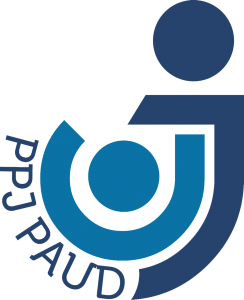METAPHOR STORY AS AN ACTIVE LEARNING MEDIA TO INCREASE CHILDREN SOCIAL CHARACTER
Abstract
This research describe the effectiveness of the metaphor story as an active learning media to increase children social character. The research’s design was one group pretest-posttest design. Purposive samplingused to choose 20 students at second grade elementary school who have low social character skor. Based on teacher report, known that there were 20 student who had been lower social character than others. On this research, collecting data of child social character used observation checklist. Data was analysed by Wilcoxon Signed-Rank Test, only 19 that can analyze because one student did not complete the treatment. The result of study showed that metaphor story as active learning media increased children social character.
This research describe the effectiveness of the metaphor story as an active learning media to increase children social character. The research’s design was one group pretest-posttest design. Purposive sampling used to choose 20 students at second grade elementary school who have low social character skor. Based on teacher report, known that there were 20 student who had been lower social character than others. On this research, collecting data of child social character used observation checklist. Data was analysed by Wilcoxon Signed-Rank Test, only 19 that can analyze because one student did not complete the treatment. The result of study showed that metaphor story as active learning media increased children social character.
Keywords
Full Text:
PDFReferences
Bennet, W. 1995. The Children Book od Virtues. New York: Simon and Schuster
Berkowitz, M.W. 2011. The science of character eduction. DP5HPDAMO0300 rev 1 pp: 43-63. Diakses 07 Januari 2013 dari http://hooverpressdamon.com
Berkowitz, M.W. & Bier, M.C. 2007. What Works in Character Education. Journal of Research in Character Education, 5 (1), pp 29-48. Information Age Publishing, Inc ISSN: 1543-1223
Bonwell dan Eison (1991). Active Learning: Creating Excitement in the Classroom. Washinton: ERIC Publications.
Burns, G.W. 2005. 101 Healing stories for kids and teens, using metaphor in therapy. Ner Jersey: John Wiley & Sons, Inc.
Chartrand, M.S. (2013). Gender differences in child development. Diakses tanggal 07 Januari 2020 dari http://www.drmaxchartrand.org.
Close, Henry T. 1998. Metaphor in psychotherapy, clinical application of stories and allegories. California: Impact Publishers.
DeRosier, M.E & Mercer, S.H. 2007. Improving student social behavior the effectiveness of a storytelling-based character education program. Journal of Research in Character Education, Vol. 5 (2). Pp. 131-148. Information Age Publishing, Inc.
Geldard, K & Geldard, D. 2011. Counselling children, A practical introductin, Third Edition. Illinois: SAGE Publications Ltd.
Geldard, Yin-Foo, & Shakespeare-Finch, (2009). How to using a fruit tree like you? Using metaphors to explore and develop emoitonal competence in children. Australian Journal of Guidance and Counselling. 19(1). Pp 1-13. Diakses pada tanggal 10 November 2014. http://eprints.qut.edu.au/
Hurlock, E. (1993). Child development, sixth edition. New York: McGraw-Hill, Inc.
Larson, K. 2009. Understanding the importance of character education. University of Wisconsin-Stout.
Lickona, T. 1991. Educating for Character: How Our School Can Teach Respect and Responsibility. New York: The New York Times Company
Lyddon, W.J., Clay, A.L., & Sparks, C.L. 2001. Metaphor and Change in Counselling. Journal of Counselling and Development, Vo;. 79, pg. 269-274.
Miller, D.C, & Salkind, N.J.1998. Handbook of Research Design and Social Measurement. Thousand Oaks, Calif. : Sage Publications
Mirrell, K.W. (2003). Behavioral, Social, and Emotonal Assessment of Children and Adolescents, second edition. New Jersey: Lawrence Erlbaum Associates, Publishers.
Papalia, D.E., Olds, S.W., dan Feldman, R.D. 2002. A Child’s World, Infancy through Adolescence. Ninth Edition. Boston: McGraw Hill.
Pascarella, E. T., and Terenzini, P. T. (1991). How College Affects Students Jossey-Bass, San Francisco
Prince, K.C. dan Ho, Edward A; Hansen, S.B. 2010. Effects of School Based Program to Improve Adaptive School Behavior and Social Competencies Among Elementary School Youth, The Living Skills Program. Journal of Research in Character Education, 8 No. 2 pp 39-59. Information Age Publishing, Inc ISSN: 1543-1223
Ryan, Kevin. 1986. The New Moral Education. Philadelphia: Phi Delta Kappan 68
Ryan, Kevin & Bohlin, Karen E. 1999. Building Character in School; Practical Ways to Bring Moral Instruction to Life. San Fransisco: Jossey-Bass Publishers.
Ulak, B.J. & Cummings, A.L. (1997). Using Client's Artistic Expressions as. Metaphor in Counselling: A Pilot Study. Canadian Journal of Counselling,. Vol. 31:4. 305.
Sopory, P., dan Dillard, J.P. (2002). The persuasive effects of metaphor: a meta-analysis. Human Communication Research, 28, 382-419.
DOI: https://doi.org/10.17509/edukids.v17i2.27356
Copyright (c) 2020 Edukids: Jurnal Pertumbuhan, Perkembangan, dan Pendidikan Anak Usia Dini

This work is licensed under a Creative Commons Attribution-ShareAlike 4.0 International License.















.jpg)






